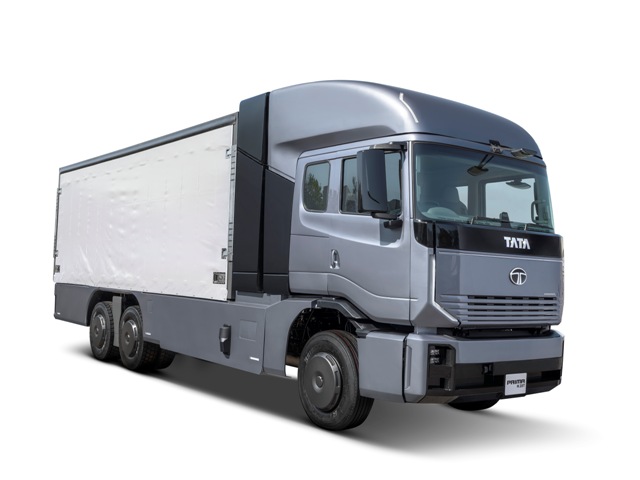Gujarat, Ahmedabad 01 April 2025: India’s trucking sector, which transports over 60% of the country’s freight, is poised for rapid expansion. According to a NITI Aayog report, freight demand is expected to quadruple by 2050, with the number of trucks increasing from 4 million in 2022 to 17 million. While this growth is crucial for economic progress, it also raises concerns about rising emissions as trucks account for nearly a third of India’s transport-related carbon emissions.
With freight demand expected to quadruple by 2050 and the number of trucks rising from 4 million in 2022 to 17 million, the need for sustainable freight solutions has never been greater. According to the report, trucks alone account for nearly a third of India’s transport-related CO₂ emissions, making decarbonisation a business and environmental priority.
Tata Motors is leading this transition with a multi-fuel strategy, integrating battery-electric, LNG, and hydrogen-powered trucks to meet diverse operational needs. “A one-size-fits-all approach will not be viable work for trucking. While battery-electric trucks are ideal for short-haul operations, CNG, LNG, and hydrogen offer viable solutions for long-haul freight,”While hydrogen-powered trucking remains the long-term goal, large-scale adoption will be gradual, with natural gases and Hydrogen Internal Combustion Engines (H2-ICE) technologies leading the transition in the near term.”, said Mr. Rajesh Kaul, Vice President & Business Head – Trucks, Tata Motors.
For sustainable trucking to become mainstream, infrastructure readiness is key. Fleet operators require reliable refueling and recharging networks to make the transition seamless. Over the past decade, CNG station networks have expanded from fewer than 900 in 2014 to over 4,500 in 2022, with plans to scale up to 17,500 by 2030. A similar expansion of charging and hydrogen refueling infrastructure is essential to accelerating green trucking.
Strategic investments in high-utilization corridors, depot-based charging, and dedicated green freight corridors will be instrumental in enabling widespread adoption. Additionally, strengthening domestic manufacturing of EV batteries, fuel cells, and hydrogen storage systems will enhance affordability and supply chain resilience.
The shift to green trucking requires balancing capital and operational costs. While alternative fuel vehicles have higher upfront costs, lower energy consumption and reduced maintenance offer long-term financial benefits. Tata Motors’ connected vehicle platform, Fleet Edge, provides real-time vehicle insights, predictive maintenance, and efficiency enhancements, helping fleet operators optimize profitability.
“The future of trucking depends on solutions that not only reduce emissions but also enhance profitability,” added Mr. Kaul. “Sustainability must be a competitive advantage, ensuring that businesses thrive while lowering their carbon footprint.”
With a clear roadmap and a commitment to achieving net-zero carbon emissions by 2045, Tata Motors is shaping the next era of cleaner, more efficient logistics in India.

